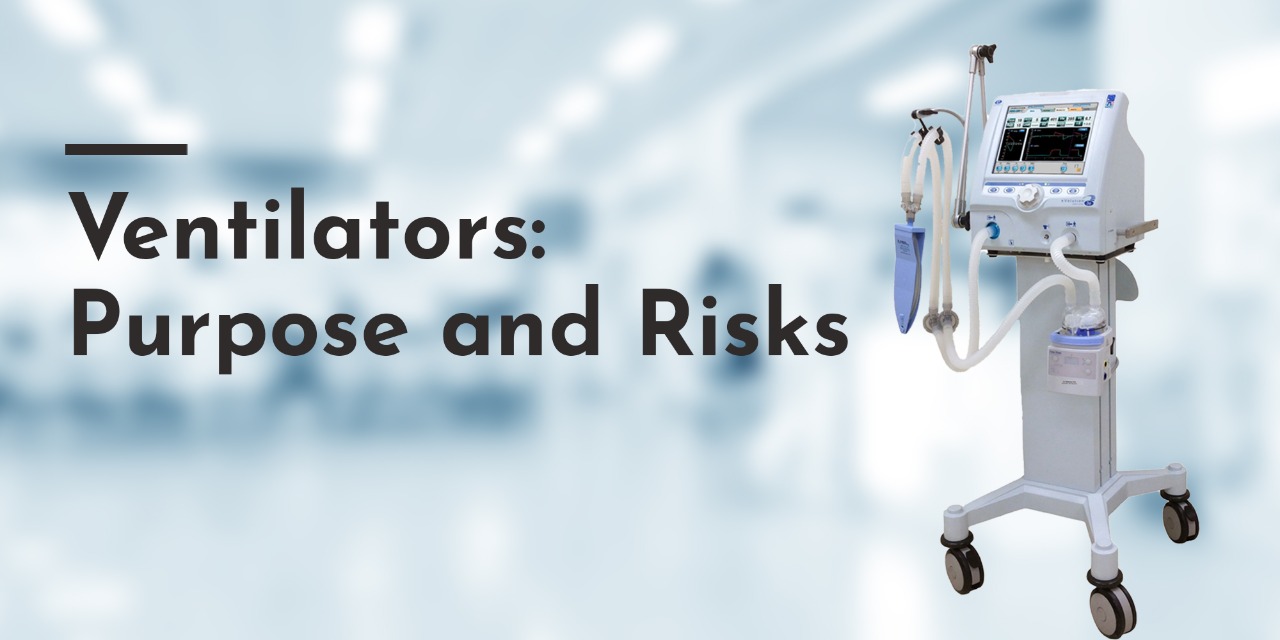Ventilators: An Overview
A ventilator is a mechanical device that is used commonly in hospitals to support patients in the case of an emergency. A ventilator pumps air into the patient’s lungs and removes carbon dioxide from the body when they find it difficult to breathe properly on their own. Doctors or respiratory therapists use the ventilators on patients who are severely injured or terminally ill. They help one to survive but don’t cure illness.
Who needs ventilation?
Many serious injuries or illnesses have the ability to bring respiratory failure. Patients with severe health conditions like pneumonia, lung disease, stroke, head injury, spinal cord injury, polio, acute respiratory distress syndrome (ARDS), cardiac arrest, lung infection, and the like need the assistance of ventilators to breathe properly.
How does a ventilator work?
A patient suffering from respiratory failure is allowed to breathe through a face mask or a breathing tube that is connected to a ventilator that helps the patient to pump air through airways like nose, mouth, throat, windpipe, and larynx. The pressure of the air flow can be set according to the person’s body demands and conditions.
Types of Ventilation:
There are several ways through which a person can get the support of a ventilator.
- Ventilation through face mask:
In this process oxygen is pushed through a face mask into the lungs. The face mask is placed over the mouth and the nose of the patient. The risks of this process are low as it does not require sedation. It allows one to talk, eat, and cough besides preventing side effects like pneumonia.
- Ventilation through breathing tube:
Breathing through a tube involves sedation. An oxygen tube extended from a ventilator will run down through the windpipe of the patient to pump air into the lungs. This does not allow one to talk, eat, or swallow.
- Tracheostomy Ventilation:
Tracheostomies are what doctors opt for when a patient needs ventilation for a long period of time. Tracheostomy is the procedure where a doctor or a respiratory therapist inserts a tube directly into the windpipe for the air to flow.
- Manual Resuscitator Bags:
Manual Resuscitator Bags are bladder-like bags that allow one to control the airflow inside one’s own body with their hands. This ventilation equipment comes handy in the case of power shortage.
Technology used in Ventilator Systems:
It is widely known that ventilators can be accessed manually and electronically. Modern ventilator systems are controlled by an embedded system that allows the required pressure and flow, depending on the needs of the patient. The Inspiration 7i Flagship Ventilator is a highly reliable and versatile ventilator that can be operated at ease with lower cost of ownership. It is portable with a comprehensive interface and easy to learn features, and better ventilator weaning.
The MTV1000 ventilator is a compact, versatile, and user-friendly ventilator that is used in emergency situations in places like ambulances, ICU, emergency room, and sometimes Home Care. The ventilator can manage high pressure and low flow oxygen simultaneously.
Risks of Ventilation:
Ventilation for a longer period of time increases the risk of infections. Breathing tube ventilation for a long time will result in the build-up of mucus and liquid in the throat and windpipe, thereby allowing the germs to accumulate in the breathing tube, resulting in pneumonia.
Breathing tube ventilation can also cause irritation in the throat and larynx, thus preventing one from coughing and speaking. Lying on the bed for many days under ventilation also results in the disorder of nerves and muscles besides increasing the risk of clotting of blood. Ventilators can even harm the lungs when the air pressure is high that might end in oxygen toxicity.
Conclusion:
Ventilators are life saving machines that help one to recover from respiratory illness. Ventilators are better when used under the guidance of a doctor or a medical professional as there are many types of ventilation, each demanding necessary requirements and conditions.

